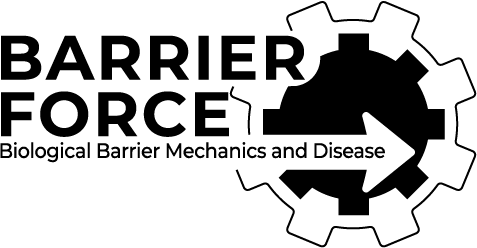Publications
Highlighted publications from CoE
-
Endothelial Pim3 kinase protects the vascular barrier during lung metastasis
Endothelial cells (ECs) form a tissue-specific barrier for disseminating cancer cells in distant organs. However, the molecular regulation of the ECs in the metastatic niche remains unclear. Here, we analyze using scRNA-Seq, the transcriptional reprogramming of lung ECs six hours after the arrival of melanoma cells in mouse lungs. We discover a reactive capillary EC…
-
Multiparameter imaging reveals clinically relevant cancer cell-stroma interaction dynamics in head and neck cancer
Epithelial tumors are characterized by abundant inter- and intra-tumor heterogeneity, which complicates diagnostics and treatment. The contribution of cancer-stroma interactions to this heterogeneity is poorly understood. Here, we report a paradigm to quantify phenotypic diversity in head and neck squamous cell carcinoma (HNSCC) with single-cell resolution. By combining cell-state markers with morphological features, we identify…
-
Ex vivo modeling of precision immuno-oncology responses in lung cancer
Despite immunotherapy’s promise in cancer treatment, patient responses vary substantially because of the individual nature of the immune system and the lack of reliable biomarkers. To address this issue, we developed a precision ex vivo platform that integrates patient-specific tumor and immune cells to study the mechanisms of antitumor immune response, predict immunotherapy outcomes, and…
-
Assessing vitamin E acetate as a proxy for E-cigarette additives in a realistic pulmonary surfactant model
Additives in vaping products, such as flavors, preservatives, or thickening agents, are commonly used to enhance user experience. Among these, Vitamin E acetate (VEA) was initially thought to be harmless but has been implicated as the primary cause of e-cigarette or vaping product use-associated lung injury, a serious lung disease. In our study, VEA serves…
-
SHANK3 depletion leads to ERK signalling overdose and cell death in KRAS-mutant cancers
The KRAS oncogene drives many common and highly fatal malignancies. These include pancreatic, lung, and colorectal cancer, where various activating KRAS mutations have made the development of KRAS inhibitors difficult. Here we identify the scaffold protein SH3 and multiple ankyrin repeat domain 3 (SHANK3) as a RAS interactor that binds active KRAS, including mutant forms,…
-
Mechano-osmotic signals control chromatin state and fate transitions in pluripotent stem cells
Acquisition of specific cell shapes and morphologies is a central component of cell fate transitions. Although signaling circuits and gene regulatory networks that regulate pluripotent stem cell differentiation have been intensely studied, how these networks are integrated in space and time with morphological transitions and mechanical deformations to control state transitions remains a fundamental open…
-
TLNRD1 is a CCM complex component and regulates endothelial barrier integrity
We previously identified talin rod domain-containing protein 1 (TLNRD1) as a potent actin-bundling protein in vitro. Here, we report that TLNRD1 is expressed in the vasculature in vivo. Its depletion leads to vascular abnormalities in vivo and modulation of endothelial cell monolayer integrity in vitro. We demonstrate that TLNRD1 is a component of the cerebral…
-
Restoring mechanophenotype reverts malignant properties of ECM-enriched vocal fold cancer
Increased extracellular matrix (ECM) and matrix stiffness promote solid tumor progression. However, mechanotransduction in cancers arising in mechanically active tissues remains underexplored. Here, we report upregulation of multiple ECM components accompanied by tissue stiffening in vocal fold cancer (VFC). We compare non-cancerous (NC) and patient-derived VFC cells – from early (mobile, T1) to advanced-stage (immobile,…
-
Membrane remodeling by FAM92A1 during brain development regulates neuronal morphology, synaptic function, and cognition
The Bin/Amphiphysin/Rvs (BAR) domain protein FAM92A1 is a multifunctional protein engaged in regulating mitochondrial ultrastructure and ciliogenesis, but its physiological role in the brain remains unclear. Here, we show that FAM92A1 is expressed in neurons starting from embryonic development. FAM92A1 knockout in mice results in altered brain morphology and age-associated cognitive deficits, potentially due to…
